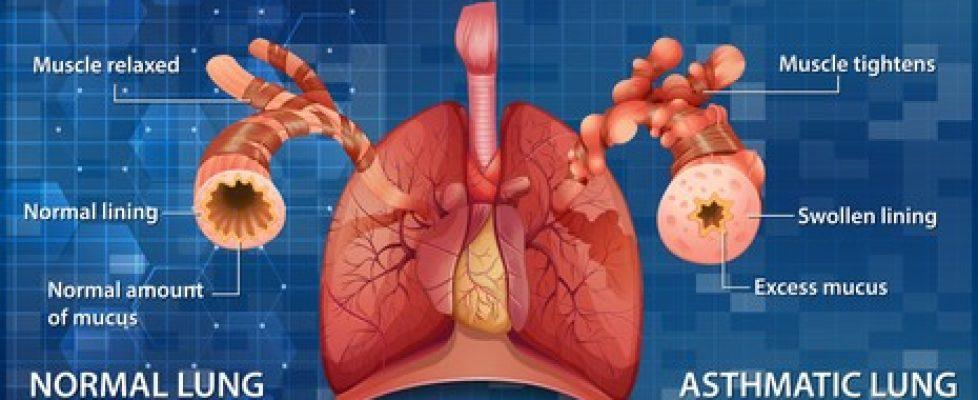A scoping review of mHealth monitoring of pediatric bronchial asthma before and during the COVID-19 pandemic
Paediatric Respiratory Reviews
Available online 17 January 2022In Press, Journal Pre-proofWhat are Journal Pre-proof articles?
ReviewA scoping review of mHealth monitoring of pediatric bronchial asthma before and during COVID-19 pandemic
Author links open overlay panelNurlanDauletbaevabcdS.Zoe OftringeWidedAkikfLukasMichaelis-BraunaJuliaKorelaLarry C.LandsbcSusanneWaldmanngBeate S.MüllerhMichaelDreheriGernotRohdejClaus F.VogelmeieraSebastianKuhneaDepartment of Internal, Respiratory and Critical Care Medicine, Philipps University of Marburg, Marburg, Germany (Member of the German Center for Lung Research (DZL)), GermanybDepartment of Pediatrics, Faculty of Medicine and Health Sciences, McGill University, Montreal, QC, CanadacThe Research Institute of McGill University Health Centre, Montreal, QC, Canadadal-Farabi Kazakh National University, Almaty, KazakhstaneDepartment of Digital Medicine, Medical Faculty OWL, Bielefeld University, Bielefeld, GermanyfDivision of Experimental Medicine, Faculty of Medicine and Health Sciences, McGill University, Montreal, QC, CanadagCentral Medical Library, Philipps University of Marburg, Marburg, GermanyhInstitute of General Practice, Goethe-University Frankfurt, Frankfurt am Main, GermanyiDepartment of Pneumology and Intensive Care Medicine, University Hospital Aachen, Aachen, GermanyjMedical Clinic 1, Department of Respiratory Medicine, University Hospital Frankfurt, Frankfurt am Main, Germany
Received 29 December 2021, Accepted 10 January 2022, Available online 17 January 2022.Show lessAdd to MendeleyShareCitehttps://doi.org/10.1016/j.prrv.2022.01.002Get rights and content
Abstract
Mobile (m) Health technology is well-suited for Remote Patient Monitoring (RPM) in a patient’s habitual environment. In recent years there have been fast-paced developments in mHealth-enabled pediatric RPM, especially during the COVID-19 pandemic, necessitating evidence synthesis. To this end, we conducted a scoping review of clinical trials that had utilized mHealth-enabled RPM of pediatric asthma. MEDLINE, Embase and Web of Science were searched from September 1, 2016 through August 31, 2021. Our scoping review identified 25 publications that utilized synchronous and asynchronous mHealth-enabled RPM in pediatric asthma, either involving mobile applications or via individual devices. The last three years has seen the development of evidence-based, multidisciplinary, and participatory mHealth interventions. The quality of the studies has been improving, such that 40% of included studies reported were randomized controlled trials. In conclusion, there exists high-quality evidence on mHealth-enabled RPM in pediatric asthma, warranting future systematic reviews and/or meta-analyses of the benefits of such RPM.
Abbreviations
BPDBronchopulmonary dysplasiaCFCystic FibrosisCOVID-19Coronavirus Disease 2019mHealthMobile HealthRDSRespiratory Distress SyndromeRPMRemote Patient Monitoring
Keywords
Remote Patient MonitoringmHealthRemote Sensing TechnologyPediatricsBronchial asthmaCOVID-19Respiratory Tract Diseases
Introduction
Digital health interventions have increasingly been permeating into patient care, enabling the development of novel healthcare concepts, including in the field of remote patient monitoring (RPM). Mobile (m) Health is part of the aforementioned digital health interventions. Drawing from capacities of mobile and wireless digital technologies, mHealth supports the transfer of the concepts of patient care, public health, disease management, and health education to patients’ homes, or places of study or work. When mHealth technology is combined with portable (wearable, implantable, etc) digital sensors, it enables RPM in the patients’ habitual environment. Most frequently, RPM via mHealth technologies involves the use of smartphones and specialized mobile apps but can also be carried out through standalone wireless devices. This RPM can be asynchronous (that is, when a medical practitioner checks patient’s health data at time points different from collection) or synchronous (i.e., a real-time remote observation of patient health data)[1], [2], [3].
Implementation of mHealth monitoring in a pediatric setting provides specific challenges, including reliance on support from a parent or caregiver, difficulty of RPM during schooltime, and requirements to the software and hardware to be tailored to the appropriate age groups. In addition, it has been a common recent trend that development of novel technological advancements outpaces the appropriate clinical testing[4]. Moreover, these fast-paced developments have been accelerated during the ongoing COVID-19 pandemic. All this justified conducting a comprehensive synthesis of the recently published evidence on mHealth monitoring in the pediatric respiratory disease. As the first step towards this objective, this scoping review aggregated and synthesized the recent available evidence of mHealth monitoring in pediatric asthma, including during the time of COVID-19 pandemic.
Materials and Methods
Objectives of the scoping review
Primary objectives:
We pursued the following primary objectives. The first primary objective was to obtain an overview of relative abundance of publications on mHealth monitoring in common respiratory diseases in the pediatric population. The second primary objective was to aggregate the published data on synchronous and asynchronous monitoring, be it RPM involving mHealth apps or via standalone (e.g., Internet-of-Things) devices. The third primary objective was to yield a structured synthesis of mHealth apps tailored to children and adolescents.
Secondary objective:
A secondary objective was to reach an informed decision as to whether a systematic review on the pediatric mHealth is warranted by the quantity and quality of the available evidence. We were interested to know which disease or medical condition a future systematic review should cover, and whether there are clinical trials of sufficient quality for critical appraisal of evidence of the benefits of mHealth-enabled RPM.
Pilot MEDLINE search
Towards the first primary objective, we wished to gauge the number of publications for common chronic pediatric respiratory diseases that would be identified by our search strategies (see below). Depending on the number of potential hits, a combined scoping review on several chronic respiratory diseases could be carried out, or the scoping review would focus on pediatric respiratory disease with the most hits. The latter was presumed to be pediatric asthma. The other common chronic pediatric respiratory diseases and conditions were bronchopulmonary dysplasia, cystic fibrosis and bronchiectasis, malformations (e.g., congenital cystic adenomatoid malformation, congenital diaphragmatic hernia, tracheomalacia, or tracheal stenosis), non-cystic fibrosis genetic diseases (e.g., alpha1-antitrypsin deficiency, sickle cell anemia, ciliary dyskinesia, Duchenne muscular dystrophy), and home ventilation and neonatal respiratory distress syndrome. In addition, we also wished to conduct a search on mHealth monitoring in pediatric COVID-19.

